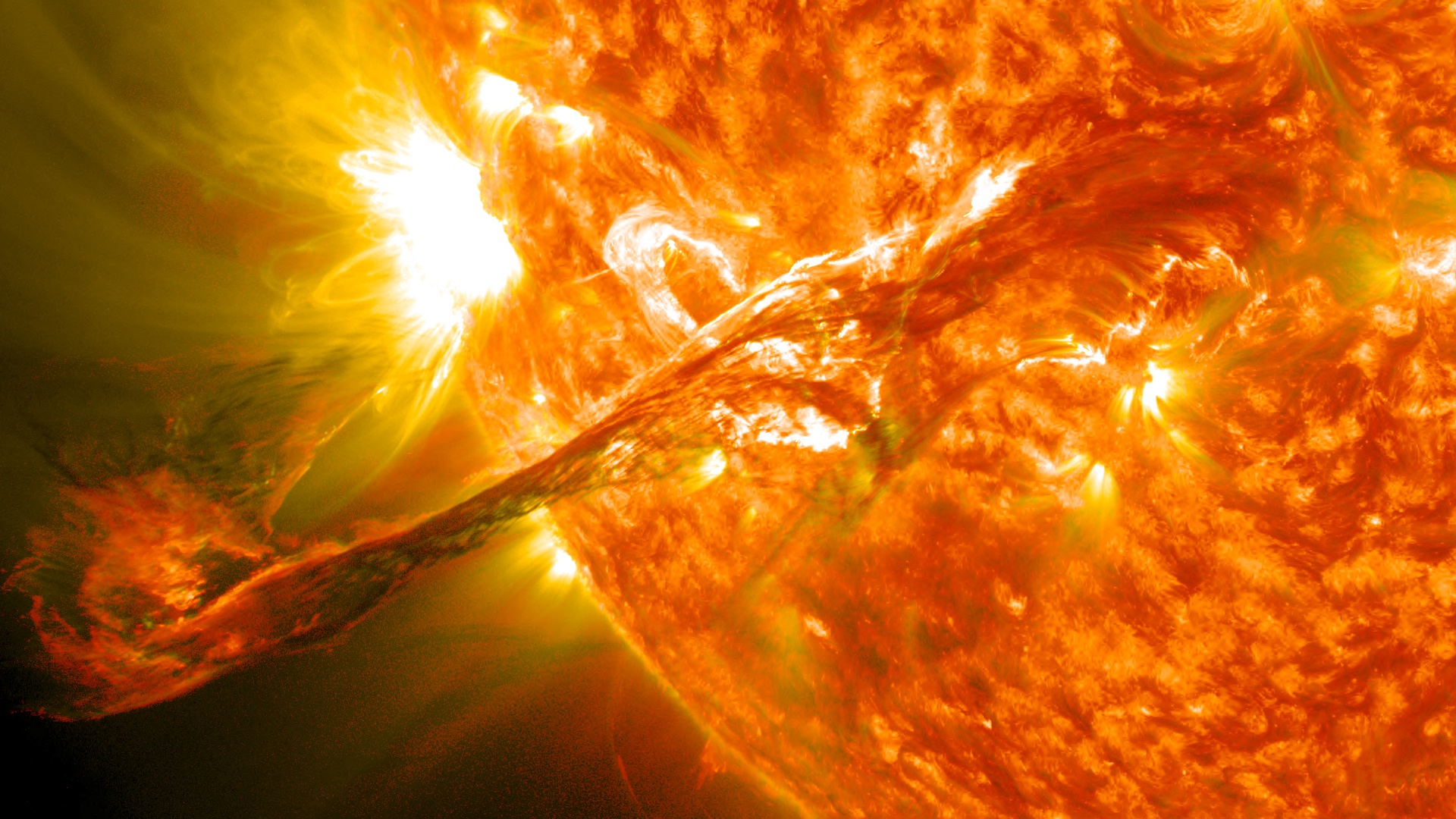The Earth and Moon have been locked in a gravitational dance for billions of years. Each day, as the Earth turns, the Moon tugs upon the oceans of the world, causing the rise and fall of tides. As a result, the Earth’s day gets a little bit longer, and the Moon gets a little more distant. The effect is small, but over geologic time it adds up. About 620 million years ago, a day on Earth was only 22 hours long, and the Moon was at least 10,000 km closer than it is now.
Continue reading “Early Earth's Oceans of Magma Accelerated the Moon's Departure”Advanced Civilizations Could be Indistinguishable from Nature
Sometimes in science you have to step back and take another look at underlying assumptions. Sometimes its necessary when progress stalls. One of the foundational questions of our day concerns the Fermi Paradox, the contradiction between what seems to be a high probability of extraterrestrial life and the total lack of evidence that it exists.
What assumptions underlie the paradox?
Continue reading “Advanced Civilizations Could be Indistinguishable from Nature”Antarctica Has Gotten 10 Times Greener in 35 Years

Our satellites are dispassionate observers of Earth’s climate change. From their vantage point they watch as pack ice slowly loses its hold on polar oceans, ice shelfs break apart, and previously frozen parts of the planet turn green with vegetation.
Now, scientists have compiled 35 years of satellite data showing that Antarctica is slowly, yet perceptibly, becoming greener.
Continue reading “Antarctica Has Gotten 10 Times Greener in 35 Years”The Early Earth Wasn’t Completely Terrible
Earth formed 4.54 billion years ago. The first period of the history of the Earth was known as the Hadean Period which lasted from 4.54 billion to 4 billion years ago. During that time, Earth was thought to be a magma filled, volcanic hellscape. It all sounds rather inhospitable at this stage but even then, liquid oceans of water are thought to have existed under an atmosphere of carbon dioxide and nitrogen. Recent research has shown that this environment may well have been rather more habitable than once thought.
Continue reading “The Early Earth Wasn’t Completely Terrible”Earth’s Old Trees Keep A Record of Powerful Solar Storms
Most of the time the Sun is pretty well-mannered, but occasionally it’s downright unruly. It sometimes throws extremely energetic tantrums. During these events, a solar flare or a shock wave from a coronal mass ejection (CME) accelerates protons to extremely high velocities. These are called Solar Particle Events or Solar Proton Events (SPEs).
However, the exact timing of these events can be difficult to ascertain. New research has determined the date of one of the most powerful SPEs to strike Earth during the Holocene.
Continue reading “Earth’s Old Trees Keep A Record of Powerful Solar Storms”Lessons From Ancient Earth’s Atmosphere: From Hostile to Hospitable

Will we ever understand how life got started on Earth? We’ve learned much about Earth’s long, multi-billion-year history, but a detailed understanding of how the planet’s atmospheric chemistry evolved still eludes us. At one time, Earth was atmospherically hostile, and its transition from that state to a planet teeming with life followed a complex path.
Continue reading “Lessons From Ancient Earth’s Atmosphere: From Hostile to Hospitable”An Otherworldly Cloud Over New Zealand

Filmmakers love New Zealand. Its landscapes evoke other worlds, which explains why so much of The Lord of the Rings was filmed there. The country has everything from long, subtropical sandy beaches to active volcanoes.
The country’s otherworldliness extends into its atmosphere, where a cloud nicknamed the “Taieri Pet” forms when conditions are right.
Continue reading “An Otherworldly Cloud Over New Zealand”Good News, the Ozone Layer Hole is Continuing to Shrink

Climate change is a huge topic and often debated across the world. We continue to burn fossil fuels and ignore our charge toward human driven climate change but while our behaviour never seems to improve, something else does! For the last few decades we have been pumping chlorofluorocarbons into the atmosphere causing a hole in the ozone layer to form. Thanks largely to worldwide regulation changes and a reduction in the use of these chemicals, the hole it seems is finally starting to get smaller.
Continue reading “Good News, the Ozone Layer Hole is Continuing to Shrink”This is What it Sounds Like When the Earth’s Poles Flip
Is there something strange and alien confined deep inside the Earth? Is it trying to break free and escape into the heavens? No, of course not.
But in a new soundscape from the ESA, it sure sounds like it.
Continue reading “This is What it Sounds Like When the Earth’s Poles Flip”Did Some of Earth’s Water Come from the Solar Wind?

The source of Earth’s water is an enduring mystery that extends to exoplanets and the notion of habitability. In broad terms, Earth’s water was either part of the planet from the beginning of its formation in the solar nebula or delivered later, maybe by asteroids and comets.
New research suggests that the Sun’s relentless solar wind could’ve played a role.
Continue reading “Did Some of Earth’s Water Come from the Solar Wind?”




